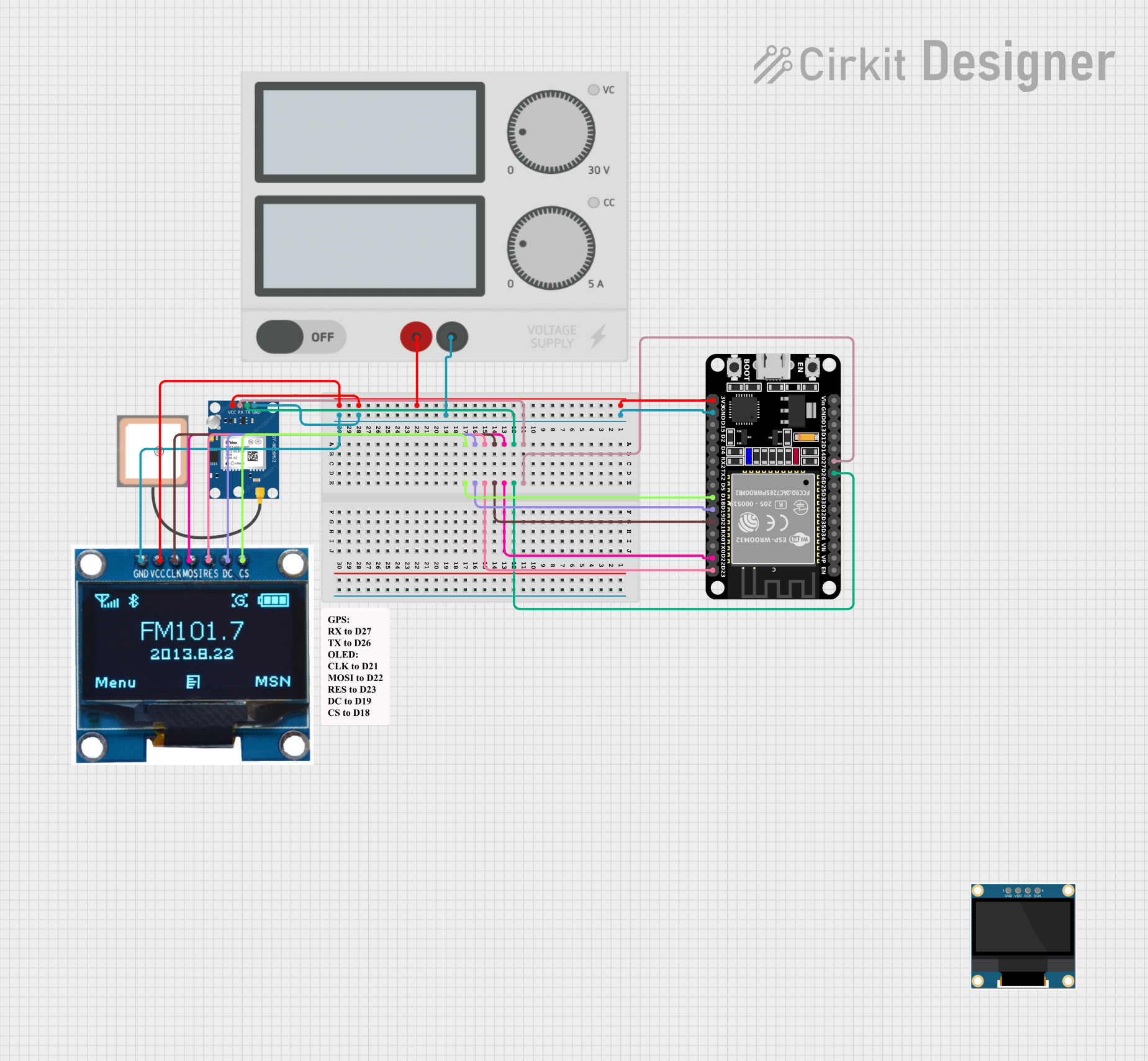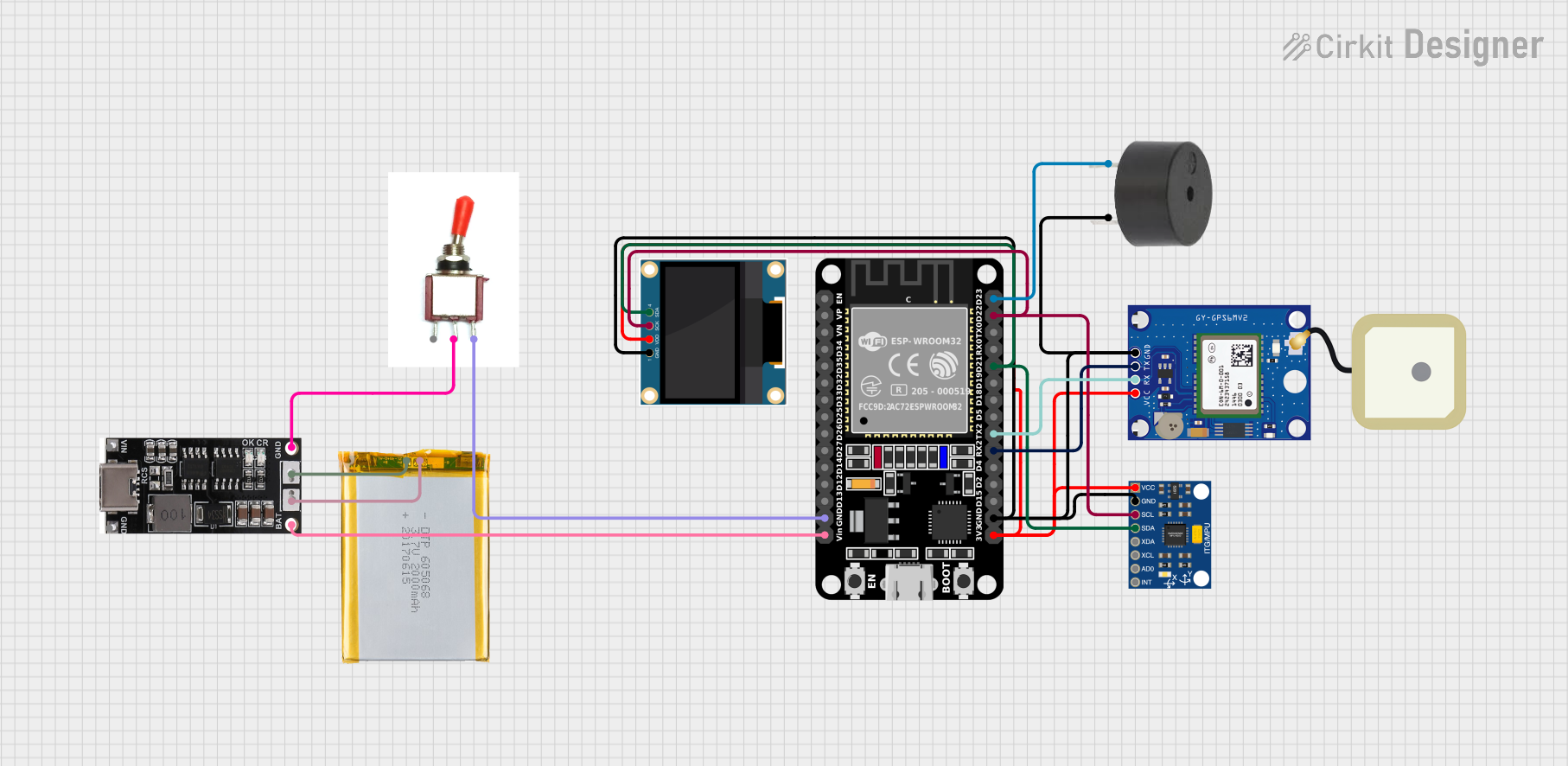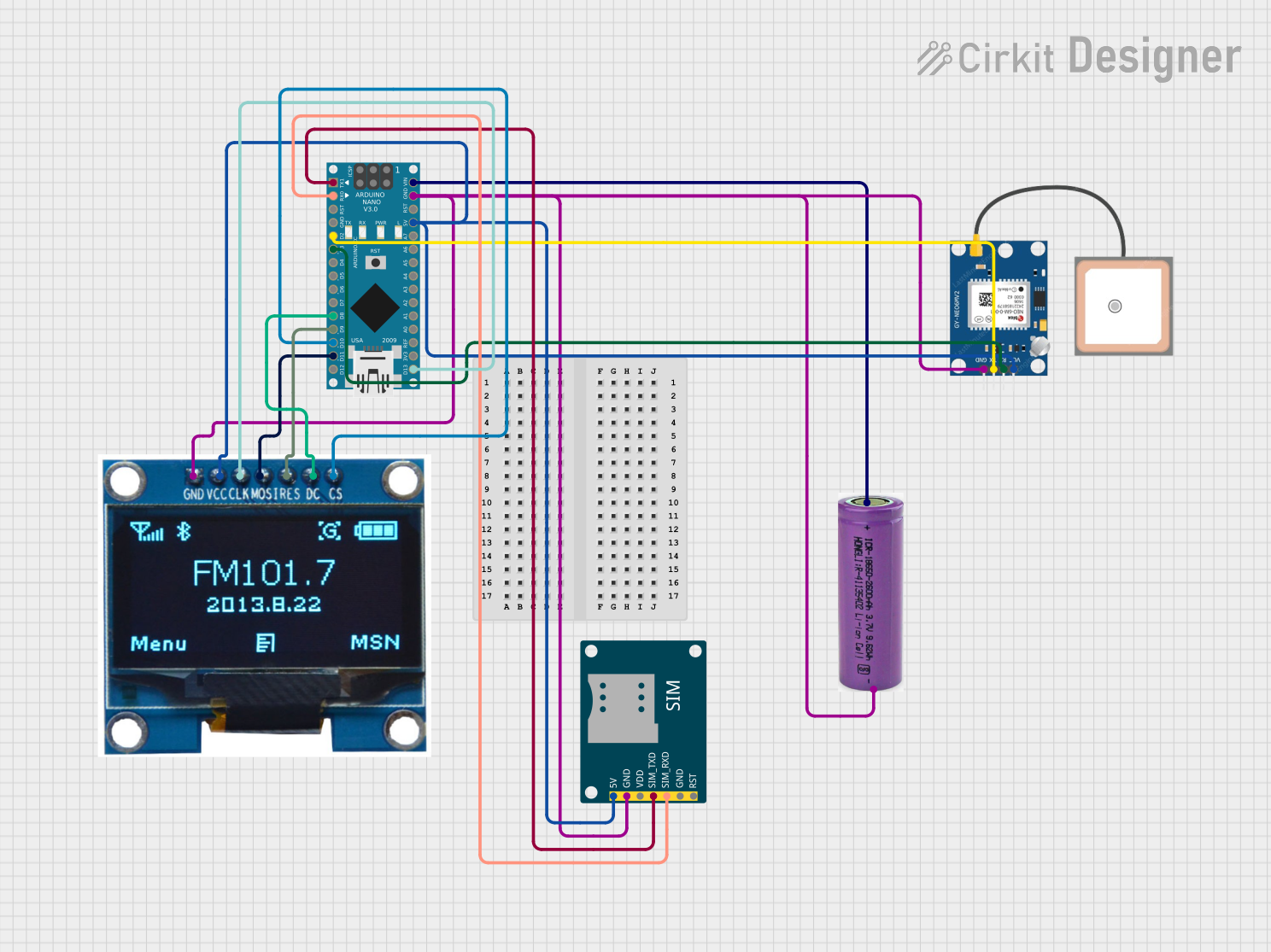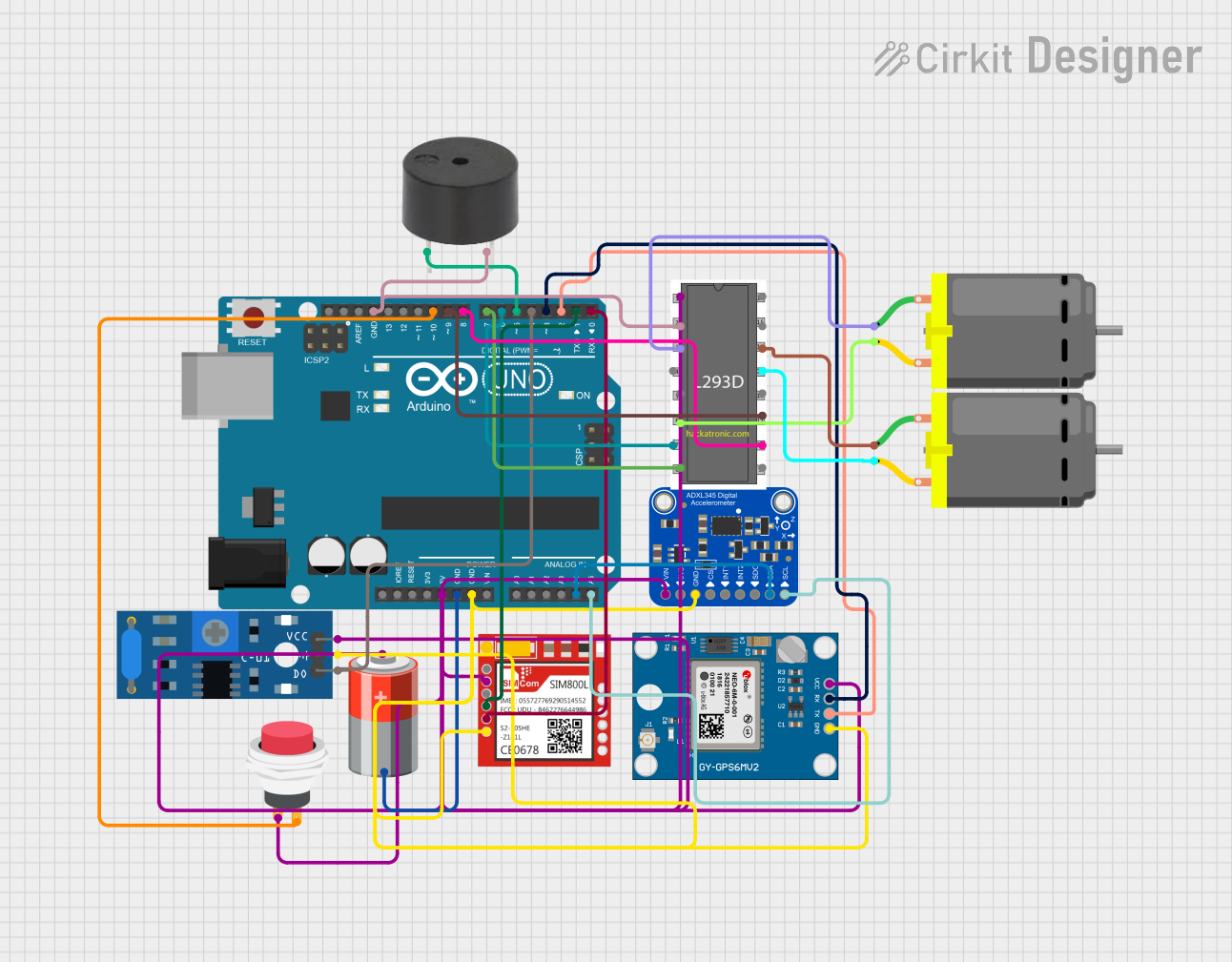
How to Use GPS: Examples, Pinouts, and Specs

 Design with GPS in Cirkit Designer
Design with GPS in Cirkit DesignerIntroduction
The NEO-7M GPS module is a high-performance, satellite-based navigation system manufactured by NEO. It provides accurate location and time information in all weather conditions, anywhere on or near the Earth. This module is widely used in various applications such as vehicle tracking, personal navigation devices, and timing applications.
Explore Projects Built with GPS

 Open Project in Cirkit Designer
Open Project in Cirkit Designer
 Open Project in Cirkit Designer
Open Project in Cirkit Designer
 Open Project in Cirkit Designer
Open Project in Cirkit Designer
 Open Project in Cirkit Designer
Open Project in Cirkit DesignerExplore Projects Built with GPS

 Open Project in Cirkit Designer
Open Project in Cirkit Designer
 Open Project in Cirkit Designer
Open Project in Cirkit Designer
 Open Project in Cirkit Designer
Open Project in Cirkit Designer
 Open Project in Cirkit Designer
Open Project in Cirkit DesignerTechnical Specifications
Key Technical Details
| Parameter | Value |
|---|---|
| Operating Voltage | 3.0V - 5.0V |
| Current Consumption | 45mA (typical) |
| Position Accuracy | 2.5m CEP |
| Velocity Accuracy | 0.1 m/s |
| Time Accuracy | 30 ns |
| Cold Start Time | 27s |
| Warm Start Time | 1s |
| Hot Start Time | 1s |
| Max Update Rate | 10 Hz |
| Communication | UART, I2C, SPI |
Pin Configuration and Descriptions
| Pin Number | Pin Name | Description |
|---|---|---|
| 1 | VCC | Power supply (3.0V - 5.0V) |
| 2 | GND | Ground |
| 3 | TX | UART Transmit Data |
| 4 | RX | UART Receive Data |
| 5 | PPS | Pulse Per Second (timing signal) |
| 6 | SDA | I2C Data Line |
| 7 | SCL | I2C Clock Line |
| 8 | SPI_CS | SPI Chip Select |
| 9 | SPI_MOSI | SPI Master Out Slave In |
| 10 | SPI_MISO | SPI Master In Slave Out |
| 11 | SPI_SCK | SPI Clock |
Usage Instructions
How to Use the NEO-7M GPS Module in a Circuit
- Power Supply: Connect the VCC pin to a 3.0V - 5.0V power supply and the GND pin to the ground.
- UART Communication: Connect the TX pin of the GPS module to the RX pin of the microcontroller (e.g., Arduino UNO) and the RX pin of the GPS module to the TX pin of the microcontroller.
- I2C Communication: Connect the SDA and SCL pins to the corresponding I2C pins on the microcontroller.
- SPI Communication: Connect the SPI_CS, SPI_MOSI, SPI_MISO, and SPI_SCK pins to the corresponding SPI pins on the microcontroller.
Important Considerations and Best Practices
- Antenna Placement: Ensure the GPS antenna has a clear view of the sky for optimal satellite signal reception.
- Power Supply: Use a stable power supply to avoid fluctuations that can affect the GPS module's performance.
- Baud Rate: Configure the UART baud rate to match the GPS module's default baud rate (typically 9600 bps).
Example Code for Arduino UNO
#include <SoftwareSerial.h>
// Create a software serial port on pins 4 (RX) and 3 (TX)
SoftwareSerial gpsSerial(4, 3);
void setup() {
// Start the hardware serial port for communication with the PC
Serial.begin(9600);
// Start the software serial port for communication with the GPS module
gpsSerial.begin(9600);
}
void loop() {
// Check if data is available from the GPS module
while (gpsSerial.available()) {
// Read data from the GPS module
char c = gpsSerial.read();
// Print the data to the serial monitor
Serial.print(c);
}
}
Troubleshooting and FAQs
Common Issues and Solutions
No GPS Fix:
- Solution: Ensure the GPS antenna has a clear view of the sky. Move to an open area if necessary.
No Data Output:
- Solution: Check the connections between the GPS module and the microcontroller. Ensure the baud rate is correctly set.
Inaccurate Position Data:
- Solution: Wait for a longer time to get a more accurate fix. Ensure the antenna is placed correctly.
FAQs
Q1: What is the default baud rate of the NEO-7M GPS module?
- A1: The default baud rate is 9600 bps.
Q2: Can the NEO-7M GPS module be used indoors?
- A2: The GPS module may not perform well indoors due to limited satellite visibility. It is recommended to use it outdoors.
Q3: How can I improve the accuracy of the GPS module?
- A3: Ensure the antenna has a clear view of the sky and wait for a longer time to get a more accurate fix.
Q4: What is the maximum update rate of the NEO-7M GPS module?
- A4: The maximum update rate is 10 Hz.
This documentation provides a comprehensive guide to using the NEO-7M GPS module. By following the instructions and best practices, users can effectively integrate this module into their projects.